 Commodity prices have been falling for the past three years and have reached a four-year low. Since early 2011, the IMF overall commodity price index (based on 2005 prices) has fallen by 16.5%: from 210.1 in April 2011 to 175.4 in August 2014. The last time it was this low was December 2010.
Commodity prices have been falling for the past three years and have reached a four-year low. Since early 2011, the IMF overall commodity price index (based on 2005 prices) has fallen by 16.5%: from 210.1 in April 2011 to 175.4 in August 2014. The last time it was this low was December 2010.
Some commodity prices have fallen by greater percentages, and in other cases the fall has been only slight. But in the past few months the falls have been more pronounced across most commodities. The chart below illustrates these falls in the case of three commodity groups: (a) food and beverages, (b) agricultural raw materials and (c) metals, ores and minerals. (Click here for a PowerPoint of the chart.)
Commodity prices are determined by demand and supply, and factors on both the demand and supply sides have contributed to the falls.
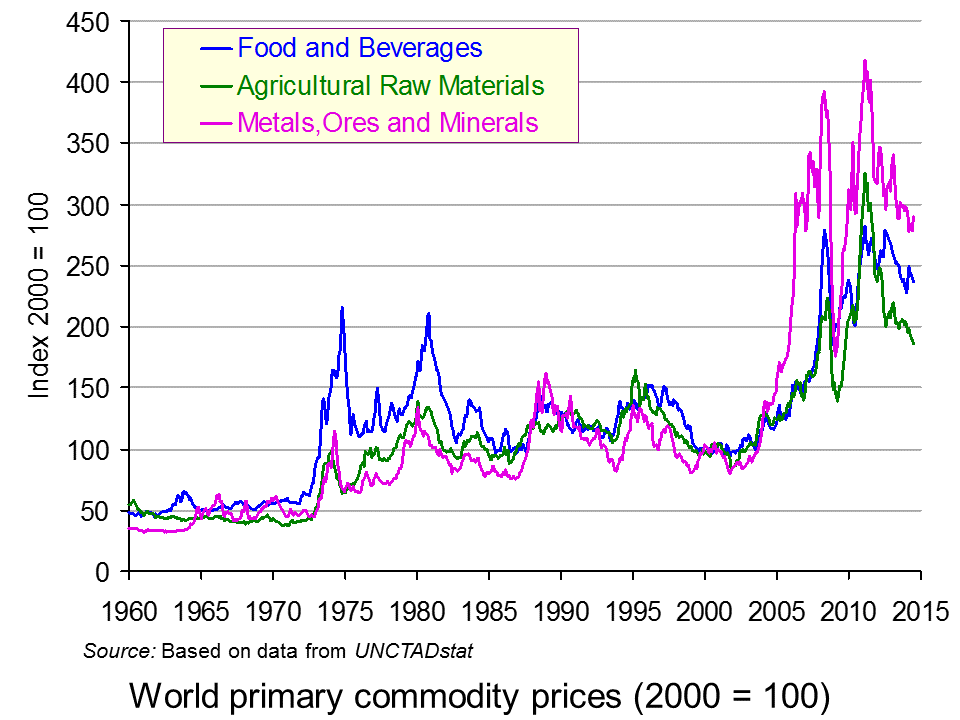
With growth slowing in China and with zero growth in the eurozone, demand for commodities has shown little growth and in some cases has fallen as stockpiles have been reduced.
On the supply side, investment in mining has boosted the supply of minerals and good harvests in various parts of the world have boosted the supply of many agricultural commodities.
But in historical terms, prices are still relatively high. There was a huge surge in commodity prices in the period up to the financial crisis of 2008 and then another surge as the world economy began to recover from 2009–11. Nevertheless, taking a longer-term perspective still, commodity prices have risen in real terms since the 1960s, but with considerable fluctuations around this trend, reflecting demand and supply at the time.
Articles
Commodities Fall to 5-Year Low With Plenty of Supplies Bloomberg Businessweek, Chanyaporn Chanjaroen (11/9/14)
Commodity ETFs at Multi-Year Lows on Supply Glut ETF Trends, Tom Lydon (11/9/14)
 What dropping commodity prices mean CNBC, Art Cashin (11/9/14)
What dropping commodity prices mean CNBC, Art Cashin (11/9/14)
Goldman sees demand hitting commodity price DMM FX (12/9/14)
Commodity price slump is a matter of perspective Sydney Morning Herald, Stephen Cauchi (11/9/14)
Commodities index tumbles to five-year low Financial Times, Neil Hume (12/9/14)
Commodities: More super, less cycle HSBC Global Research, Paul Bloxham (8/1/13)
Commodity prices in the (very) long run The Economist (12/3/13)
Data
IMF Primary Commodity Prices IMF
UNCTADstat UNCTAD (Select: Commodities > Commodity price long-term trends)
Commodity prices Index Mundi
Questions
- Identify specific demand-and supply-side factors that have affected prices of (a) grains; (b) meat; (c) metal prices; (d) oil.
- Why is the demand for commodities likely to be relatively inelastic with respect to price, at least in the short term? What are the implications of this for price responses to changes in supply?
- Why may there currently be a ‘buying opportunity’ for potential commodity purchasers?
- What is meant by the ‘futures market’ and future prices? Why may the 6-month future price quoted today not necessarily be the same as the spot price (i.e. the actual price for immediate trading) in 6 months’ time?
- How does speculation affect commodity prices?
- How does a strong US dollar affect commodity prices (which are expressed in dollars)?
- How may changes in stockpiles give an indication of likely changes in commodity prices over the coming months?
- Distinguish between real and nominal commodity prices. Which have risen more and why?
- How do real commodity prices today compare with those in previous decades?
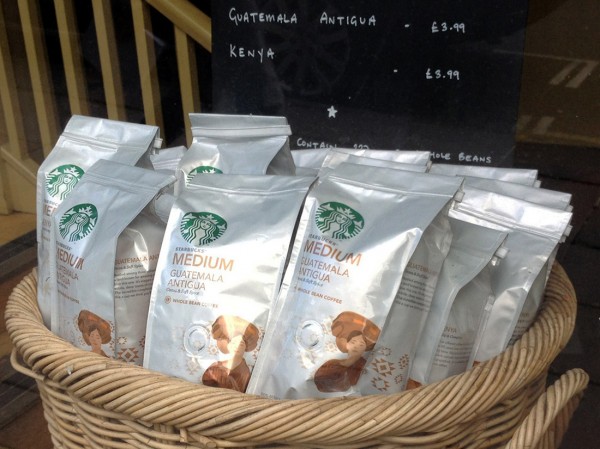 Coffee prices have been falling on international commodity markets. In August, the International Coffee Organization’s ‘composite indicator price’ fell to its lowest level since September 2009 (see). This reflects changes in demand and supply. According to the ICO’s monthly Coffee Market Report for August 2013 (see):
Coffee prices have been falling on international commodity markets. In August, the International Coffee Organization’s ‘composite indicator price’ fell to its lowest level since September 2009 (see). This reflects changes in demand and supply. According to the ICO’s monthly Coffee Market Report for August 2013 (see):
“Total exports in July 2013 reached 9.1 million bags, 6.6% less than July 2012, but total exports for the first ten months of the coffee year are still up 3.6% at 94.5 million bags. In terms of coffee consumption, an increase of 2.1% is estimated in calendar year 2012 to around 142 million bags, compared to 139.1 million bags in 2011.”
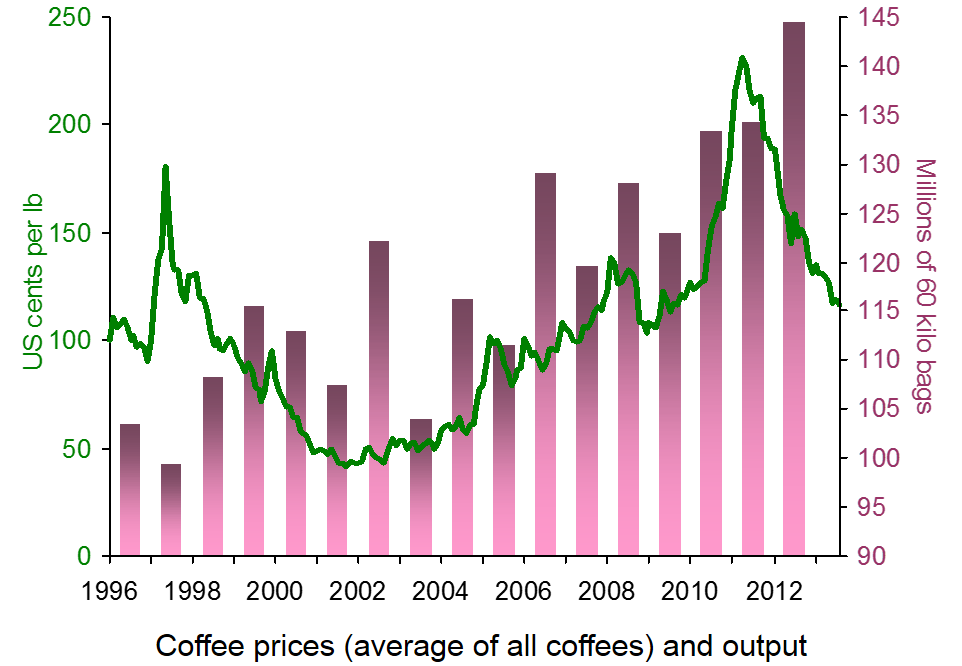 But despite the fall in wholesale coffee prices, the price of a coffee in your local coffee shop, or of a jar of coffee in the supermarket, has not been falling. Is this what you would expect, given the structure of the industry? Is it simply a blatant case of the abuse of market power of individual companies, such as Starbucks, or even of oligopolistic collusion? Or are more subtle things going on?
But despite the fall in wholesale coffee prices, the price of a coffee in your local coffee shop, or of a jar of coffee in the supermarket, has not been falling. Is this what you would expect, given the structure of the industry? Is it simply a blatant case of the abuse of market power of individual companies, such as Starbucks, or even of oligopolistic collusion? Or are more subtle things going on?
The following articles look at recent trends in coffee prices at both the wholesale and retail level.
Articles
Coffee Prices Continue Decline Equities.com, Joel Anderson (17/9/13)
Arabica coffee falls Business Recorder (19/9/13)
Brazil Launches Measures to Boost Coffee Prices N. J. Douek, Jeffrey Lewis (7/9/13)
 Coffee Prices Destroyed Bloomberg (4/9/13)
Coffee Prices Destroyed Bloomberg (4/9/13)
The surprising reality behind your daily coffee: The CUP costs twice as much as the beans that are flown in from South America Mail Online, Mario Ledwith (23/9/13)
Coffeenomics: Four Reasons Why You Can’t Get a Discount Latte Bloomberg Businessweek, Kyle Stock (19/9/13)
Here’s who benefits from falling coffee costs CNBC, Alex Rosenberg (9/9/13)
The great coffee rip-off is no myth Sydney Morning Herald, BusnessDay, Michael Pascoe (23/9/13)
Monthly Coffee Market Report International Coffee Organization (August 2013)
Data
Coffee Prices ICO
ICO Indicator Prices – Annual and Monthly Averages: 1998 to 2013 ICO
Coffee, Other Mild Arabicas Monthly Price – US cents per Pound Index Mundi
Coffee, Robusta Monthly Price – US cents per Pound Index Mundi
Questions
- Why have wholesale coffee prices fallen so much since 2011? Are the reasons on the demand side, the supply side or both? Illustrate your answer with a supply and demand diagram.
- What determines the price elasticity of demand for coffee (a) on international coffee markets; (b) in supermarkets; (c) in coffee shops?
- Why has the gap between Arabica and Robusta coffee prices narrowed in recent months?
- Identify the reasons why coffee prices have not fallen in coffee shops.
- The cost of the coffee beans accounts for around 4% of the cost of a cup of coffee in a coffee shop. If coffee beans were to double in price and other costs and profits were to remain constant, by what percentage would a cup of coffee rise?
- How would you set about establishing whether oligopolistic collusion was taking place between coffee shops?
- What is meant by ‘hedging’ in coffee markets? How does hedging affect wholesale coffee prices?
- Explain the statement “If they have hedged correctly, Starbucks and such competitors as Green Mountain Coffee Roasters (GMCR) are likely paying far more for beans right now than current market rates.”
- What are “buffer stocks”. How can governments use buffer stocks (e.g. of coffee beans) to stabilise prices? What is the limitation on their power to do so? Can buffer stocks support higher prices over the long term?
- What are “coffee futures”? What determines their price? What effect will coffee future prices have on (a) the current price of coffee; (b) the actual price of coffee in the future?
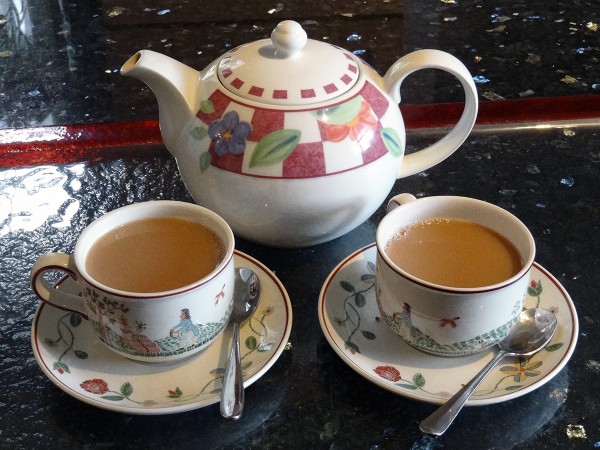 Six of the major tea producing countries – India, Kenya, Sri Lanka, Indonesia, Rwanda and Malawi – have formed an International Tea Producers’ Forum (ITPF). Together these countries produce slightly more than the world’s tea. The hope of the members of the new ITPF is that their cartel will allow them to increase the price of tea to the growers and to create greater price stability.
Six of the major tea producing countries – India, Kenya, Sri Lanka, Indonesia, Rwanda and Malawi – have formed an International Tea Producers’ Forum (ITPF). Together these countries produce slightly more than the world’s tea. The hope of the members of the new ITPF is that their cartel will allow them to increase the price of tea to the growers and to create greater price stability.
According to the Assam Tribune article below:
ITPF’s main objectives include – safeguarding the interests of the tea-producing countries, evolving collective solutions for the problems facing the producers, providing technical cooperation, sharing of technology and expertise by the member countries, undertaking market studies and research projects to address any specific issues concerning tea in general or any variety of tea, among others.
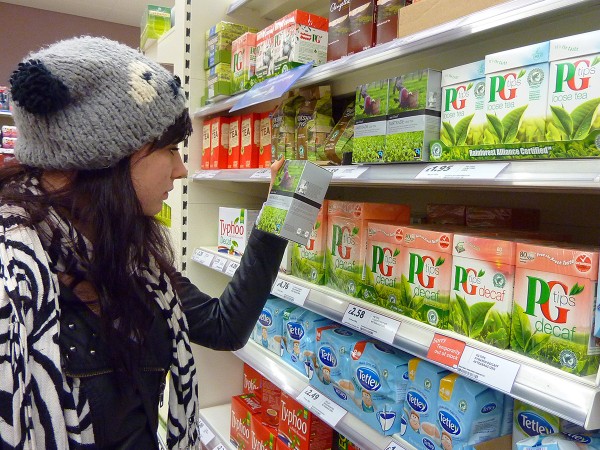 And according to the article from Sri Lanka’s Daily News:
And according to the article from Sri Lanka’s Daily News:
Chairman of the Planters’ Association of Ceylon, which represents the interests of 23 Regional Plantation Companies, Lalith Obeyesekere said this was a landmark occasion. Sri Lanka particularly looks to the forum to provide long-term sustainability to the tea industry in maintaining price stability and quality standards, among the other objectives set out in the mandate… The Planters’ Association said they were confident that Sri Lanka could use the ITPF to re-look at the industry in order that local tea producers realize their full potential.
Sri Lanka’s plantation industries minister Mahinda Samarasinghe said:
The bulk of production is in the hands of smallholders. So there’s a need to increase their incomes. Price stability is definitely important.
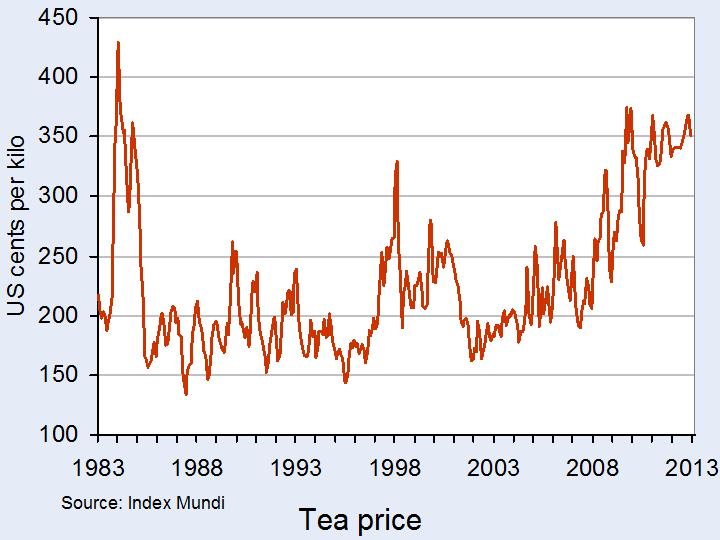 The main aim of the ITPF over the longer term is likely to be to raise tea prices. The chart shows international tea prices from 1983 to the present day. As you can see, they have fluctuated considerably. Note that these are prices in nominal terms and hence do not take inflation into account. Click here for a PowerPoint of the chart.
The main aim of the ITPF over the longer term is likely to be to raise tea prices. The chart shows international tea prices from 1983 to the present day. As you can see, they have fluctuated considerably. Note that these are prices in nominal terms and hence do not take inflation into account. Click here for a PowerPoint of the chart.
But if the main aim is to increase prices to tea growers, how could this be achieved? One objective of the ITPF is to stimulate demand for tea by ‘promoting tea consumption through generic promotional campaigns’. The aim would be to encourage people to switch from coffee and soft drinks.
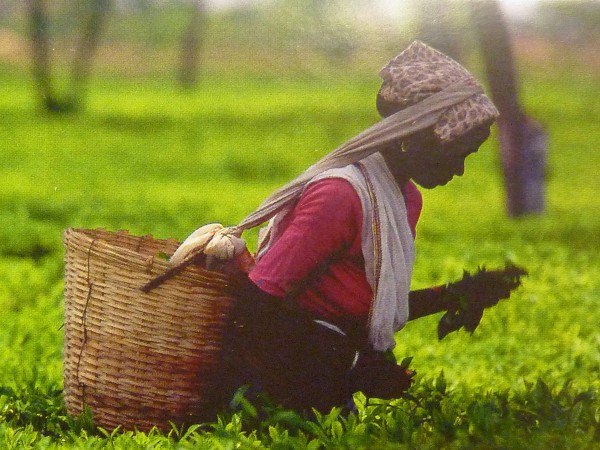 But to take advantage of its market power, the cartel might also want to reduce tea production, thereby pushing up the price. This, of course, would be more feasible if it had a larger than 50% share of the market.
But to take advantage of its market power, the cartel might also want to reduce tea production, thereby pushing up the price. This, of course, would be more feasible if it had a larger than 50% share of the market.
Although production quotas are not currently part of the agreement, these are likely to be considered at future meetings, especially if the three other large producers – China, Vietnam and Iran – can be persuaded to join.
China, with some 38% of the market, is the world’s largest tea producer. Although it sent an observer to the meeting (as did Iran), it was not one of the signatories. If it could be persuaded to join the cartel, this would increase its power. Nevertheless, China specialises in different types of tea, mainly green teas, and is not the world’s biggest exporter – that is Kenya.
Articles
Tea nations join forces Radio New Zealand (25/1/13)
International Tea Producers’ Forum formed Assam Tribune, Ajit Patowary (23/1/13)
Planters’ Association upbeat on newly formed International Tea Producer’s Forum Daily News (Sri Lanka) (26/1/13)
Leaf Lobby: Sri Lanka hosts tea producer forum Lanka Business Online (24/1/13)
‘Tea cartel’ formed by biggest producing nation BBC News (23/1/13)
Tea producers brew up plan to raise prices Emirates 24/7 (23/1/13)
Data
Tea Monthly Price – US cents per Kilogram Index Mundi
Questions
- What are the stated aims of the newly formed ITPF? How realistic are they?
- What conditions are necessary for a cartel to be successful in raising prices over the long term?
- With reference to the chart, what can you say about the real price of tea over the period 1983 to 2013?
- To what extent are these conditions met by the ITPF?
- Why may a rise in tea prices in the supermarkets not result in a rise in prices to tea growers?
- How may tea growers benefit from the ITPF even if the Forum does not result directly in a rise in prices to growers?
- How can game theory help to explain the possible behaviour of members of a cartel and producers outside the cartel?
 With droughts and poor harvests in both North America and in Russia and the Ukraine, there are worries that food prices are likely to see sharp rises in the coming months. This is clearly bad news for consumers, especially the poor for whom food accounts for a large proportion of expenditure.
With droughts and poor harvests in both North America and in Russia and the Ukraine, there are worries that food prices are likely to see sharp rises in the coming months. This is clearly bad news for consumers, especially the poor for whom food accounts for a large proportion of expenditure.
But it’s also bad news more generally, as higher food prices are likely to have a dampening effect on the global economy, struggling to recover from five years of low or negative growth. And it’s not just food prices. Oil prices are rising again. Since mid June, they have risen by nearly 25%. This too is likely to have a dampening effect.
Another contributing factor to rising food prices is a response, in part, to rising oil prices. This is the diversion of land from growing food to growing crops for biofuels.
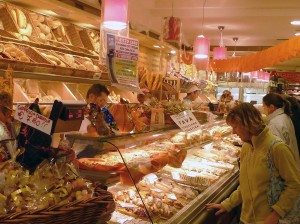
G20 countries held a conference call on 28 August to discuss food prices. Although representatives decided against an emergency meeting, they agreed to reassess the situation in a few weeks when the size of the US harvest would be clearer. If the situation proved as bad as feared, then the G20 would call an emergency meeting of the Rapid Response Forum, to consider what could be done.
But is the sole cause of rising food prices a lack of production? Are there other problems on the supply side, such as poor distribution systems and waste? And what about the role of demand? How is this contributing to long-term increases in food prices? The articles consider these various factors and what can be done to dampen food prices.
Articles
G20 points to ‘worrying’ food prices Financial Times, Javier Blas (28/8/12)
US food prices to surge on drought Gulf News(30/8/12)
Best to get used to high food and energy prices – they’re here to stay The Telegraph, Jeremy Warner (29/8/12)
Feeling a drought The Economist (14/8/12)
Q&A: World food and fuel prices BBC News (14/8/12)
 G20 considers global meeting as food prices rise BBC News (28/8/12)
G20 considers global meeting as food prices rise BBC News (28/8/12)
 Biofuels and Food Prices (direct link) BBC ‘In the Balance’ programme (25/8/12)
Biofuels and Food Prices (direct link) BBC ‘In the Balance’ programme (25/8/12)
U.N. body urges G20 action on food prices, waste Reuters, Patrick Lannin (27/8/12)
Ethanol industry hits back over food price claims EurActiv (28/8/12)
The era of cheap food may be over Guardian, Larry Elliott (2/9/12)
Data
Food Price Index Index Mundi
Questions
- Why have food prices been rising in recent weeks?
- Use a demand and supply diagram to demonstrate what has been happening to food prices.
- What determines the price elasticity of demand for wheat? What might this elasticity vary over time?
- What is the role of speculation in determining food prices?
- Illustrate on an aggregate demand and supply diagram the effect of a commodity price shock. What is likely to be the policy response from central banks?
- What determines the price elasticity of supply of food in (a) the short term and (b) the long term?
- What determines the cross price elasticity of supply of food to the price of oil? Is the cross price elasticity of supply positive or negative?
- What can governments do to reduce food prices, or at least reduce food price inflation?
- What benefits may come from higher food and fuel prices over the longer term?
Anyone investing in commodities over the past few weeks will have been in for a bumpy ride. During the first part of 2011, commodity prices have soared (see A perfect storm brewing?). This has fuelled inflation and has caused the Bank of England to revise upwards its forecast for inflation (see Busy doing nothing see also Prospects for Inflation).
But then in the first week of May, commodity prices plumetted. On the 5 May, oil prices fell by 7.9% – their largest daily amount since January 2009. Between 28 April and 6 May silver prices fell from $48.35 per ounce to just over $33.60 per ounce – a fall of over 30%. And it was the same with many other commodities – metals, minerals, agricultural raw materials and foodstuffs.
Many financial institutions, companies and individuals speculate in commodities, hoping to make money buy buying at a low price and selling at a high price. When successful, speculators can make large percentage gains in a short period of time. But they can also lose by getting their predictions wrong. In uncertain times, speculation can be destabilising, exaggerating price rises and falls as speculators ‘jump on the bandwagon’, seeing price changes as signifying a trend. In more stable times, speculation can even out price changes as speculators buy when prices are temporarily low and sell when they are temporarily high.
Times are uncertain at present. Confidence fluctuates over the strength of the world recovery. On days of good economic news, demand for commodities rises as people believe that a growing world economy will drive up the demand for commodities and hence their prices. On days of bad economic news, the price of commodities can fall. The point is that when undertainty is great, commodity prices can fluctuates wildly.
Articles
Commodities plunge: Blip or turning point? BBC News, Laurence Knight (6/5/11)
Commodity hedge fund loses $400m in oil slide Financial Times, Sam Jones (8/5/11)
Commodities: ‘epic rout’ or the new normal? BBC News blogs: Stephanomics, Stephanie Flanders (6/5/11)
Commodities Still a Bubble – But Prices May Continue to Rise Seeking Alpha, ChartProphet (9/5/11)
When a sell-off is good news The Economist, Buttonwood (6/5/11)
Gilt-edged argument The Economist, Buttonwood (28/4/11)
Commodities: What volatility means for your portfolio Reuters blogs: Prism Money (9/5/11)
Gold, silver rise again on debt, inflation concerns Reuters, Frank Tang (10/5/11)
Commodities After The Crash, No Way But Up The Market Oracle, Andrew McKillop (9/5/11)
Outlook 2011:Three Dominant Factors Will Impact Precious Metals in 2011 GoldSeek (9/5/11)
Energy bills set to rise sharply next winter, Centrica warn Guardian, Graeme Wearden (9/5/11)
Dollar triggered commodities ‘flash crash’, not Bin Laden The Telegraph, Garry White, and Rowena Mason (9/5/11)
The outlook for commodity prices Live Mint@The Wall Steet Journal, Manas Chakravarty (11/5/11)
Three ways to play the next commodities bubble Market Watch, Keith Fitz-Gerald (11/5/11)
Data
Commodity Prices Index Mundi
Commodities Financial Times
Commodities BBC Market Data
Questions
- Why did commodity prices fall so dramatically in early May, only to rise again rapidly afterwards?
- Why do commodity prices fluctuate more than house prices?
- What is the relevance of price elasticity of demand and supply in explaining the volatility of commodity prices?
- Under what circumstances is speculation likely to be (a) stabilising; (b) destabilising?
- To what extent are rising commodity prices (a) the cause of and (b) the effect of world inflation?
- If commodity prices go on rising every year, will inflation go on rising? Explain.
 Commodity prices have been falling for the past three years and have reached a four-year low. Since early 2011, the IMF overall commodity price index (based on 2005 prices) has fallen by 16.5%: from 210.1 in April 2011 to 175.4 in August 2014. The last time it was this low was December 2010.
Commodity prices have been falling for the past three years and have reached a four-year low. Since early 2011, the IMF overall commodity price index (based on 2005 prices) has fallen by 16.5%: from 210.1 in April 2011 to 175.4 in August 2014. The last time it was this low was December 2010. What dropping commodity prices mean CNBC, Art Cashin (11/9/14)
What dropping commodity prices mean CNBC, Art Cashin (11/9/14)







